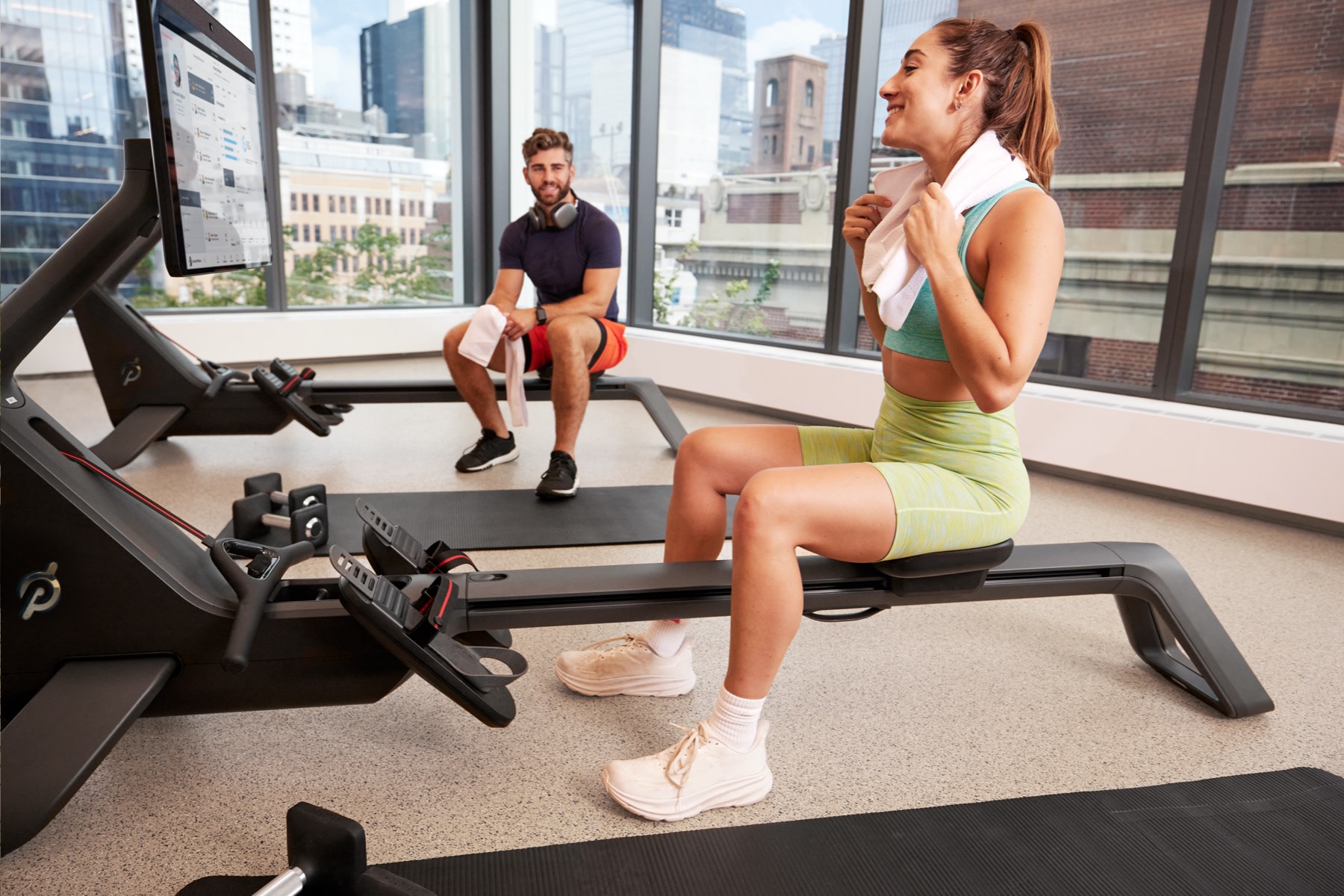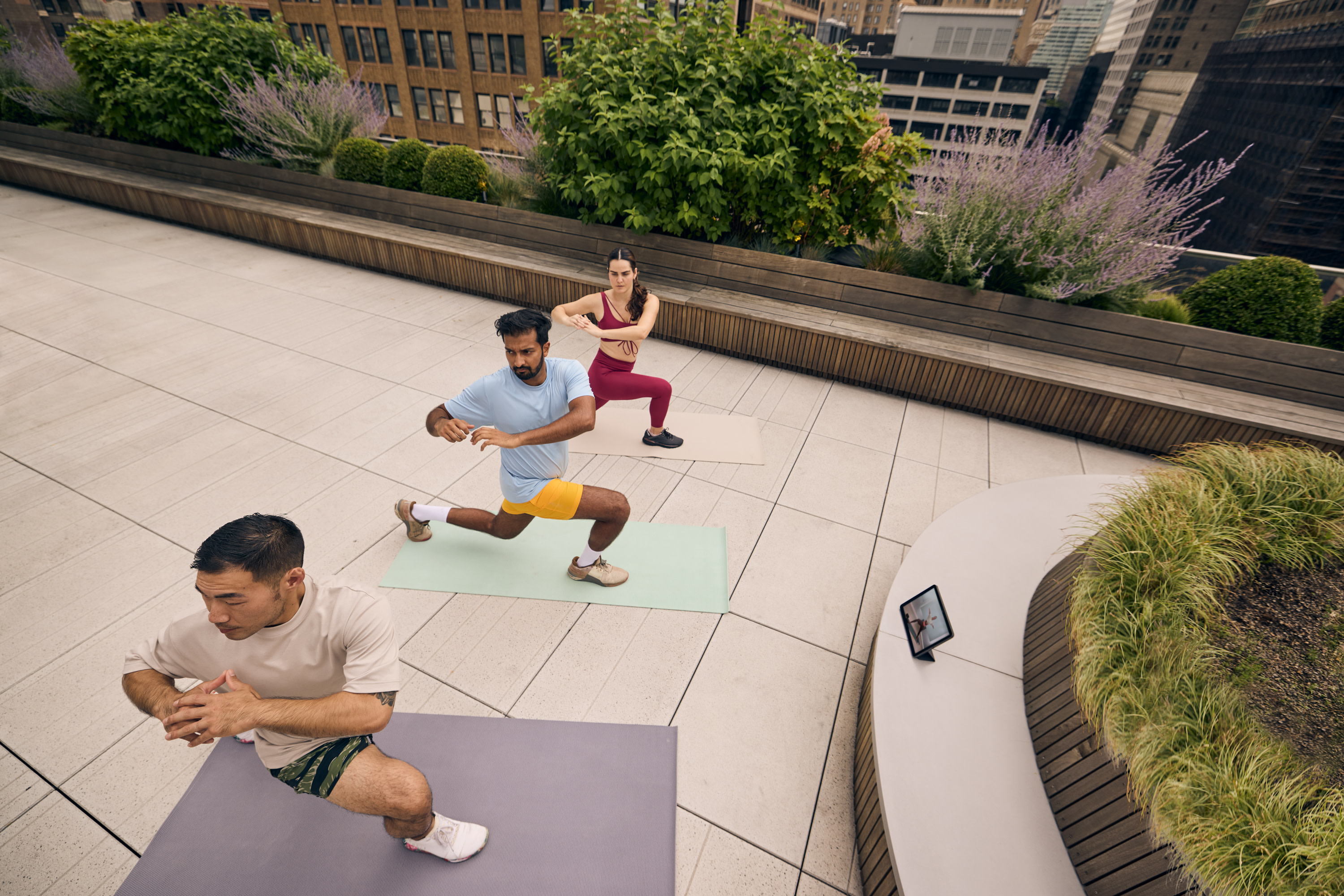
5 Apartment Building Amenities to Create a Wellness Haven
These fitness-oriented offerings are a big draw for residents.
By Rebecca Deczynski•
1. Amped-up fitness equipment
2. Community programming
3. Niche sports centers
4. Cultivated green space
5. On-site spa amenities
As the saying goes, healthy habits start at home. That’s why apartment dwellers today put a big emphasis on their prospective home’s wellness offerings: nearly three-quarters say that a fitness center is an important multi-family residential building amenity, and one in five renters who consider community amenities a must wouldn’t consider renting in a building without one, according to the National Multifamily Housing Council (NMHC) and Grace Hill 2024 Renter Preferences Survey, which tapped 172,703 renters nationwide. No wonder why 90 percent of new apartment communities developed in the past decade or so include them. It’s pretty clear then, that in order to stay competitive enough to attract and retain renters today, health-conscious amenities are non-negotiable. Read on for five ways you can level up your building’s wellness offerings—including with Peloton’s multi-family residential options—to keep residents happy and healthy, right in the comfort of their own homes.
1. Amped-up fitness equipment
When it comes to gym amenities, apartment dwellers are most interested in cardio machines, free weights, and weight machines, NMHC’s latest survey shows. With Peloton Bike, residents can break a sweat by choosing from thousands of different workouts—no matter where they are in their fitness journey or which playlist gets them going. Peloton Row offers an unmatched entry point for rowing, with real-time Form Assist feedback, as well as a swivel touchscreen (also available on Bike+) that makes it easy for users to follow Peloton strength or yoga workouts on the mat. Best of all, with Peloton’s commercial software, there is no limit to the number of users who can create an account and track their workouts at no cost to them; it’s like giving renters access to their own personalized fitness system.

2. Community programming
Live, in-person fitness and personal training are compelling reasons for residents to use an on-site fitness center; nearly three-quarters of renters who say fitness centers are important in a multi-family residence want instructor-led classes, according to the NMHC survey. By offering on-site workout classes, apartment complexes like New York City’s Mercedes House and Los Angeles’s The Roy foster a sense of community among residents—and reduce their need for a separate gym membership. To encourage renters to stick with their healthy habits, you can also consider rolling out monthly “challenges” or activities that help foster a sense of accountability among residents, like scheduled group runs or neighborhood walks. After all, research shows that having a gym buddy really does make a person more likely to stay committed to their workouts.
3. Niche sports centers
Apartment residents have come to expect cardio machines, free weights, and yoga mats as a given in a residential fitness center—so more specialized options can help your building stand out and attract renters who might look beyond the expected for their workout routines. Seattle’s The Residences at Rainier Square includes a golf simulator among its fitness amenities, and Chicago’s The Porter taps into trends with its rooftop pickleball court. The latter is a particularly smart offering; NMHC’s survey shows that more than one in five renters are interested in that particular buzzy racket sport. Pool access, of course, is a consistently popular amenity with renters nationwide—but for a competitive edge, you might consider appealing to all potential residents by installing both a lap pool and a leisure pool, as did New York City’s The Courtand.

4. Cultivated green space
It’s true: nature heals. One recent peer-reviewed study even showed that people who have greater access to greenery where they live can add 2.5 years to their lifespan. That’s why green space is especially coveted in urban areas. Green rooftops or communal areas can reduce stress and lead to an overall greater sense of well-being among residents. That’s the big idea behind biophilic design, which aims to make people feel more connected to nature; design elements like natural light and organic materials, like wood, can play a role in this aim. The integration of plants throughout a space, both indoors and out, is also key. Scottsdale’s Optima Camelview Village, which features 23 acres of rooftop gardens within its 13 acres of property through clever engineering and architecture, is an ideal version of this design concept—but any bit of green can make a difference. And to create an even greater sense of community (and increase resident access to fresh, healthy food), you might consider offering garden plots, as Silver Spring’s The Blairs does.
5. On-site spa amenities
Another way residential buildings can stand out to renters who want to keep their stress levels low? Spa amenities! Saunas—which research shows can both improve users’ moods and benefit respiratory health—are one popular option. Hammams have also increased in popularity across the U.S.; New York City’s 111 Murray, for instance, includes a Turkish-inspired steam room as a central part of its residential spa. In Santa Monica, The Park offers residents a comprehensive spa experience with a Himalayan salt sauna and steam room, a massage space, and heated lounge chairs.
Over the past few years, general interest in health and wellness has boomed; at least half of U.S. consumers consider it a “top priority” in their lives, according to research from McKinsey. So when they’re considering where to live, it’s highly likely that a residence’s wellness offerings—from its fitness center to its green spaces—will be deciding factors. Especially as the share of affluent renters increases in the U.S., as RentCafe reported last year, multi-family residential complexes will have to offer best-in-class amenities to secure the residents they want—and maybe even turn them into buyers.
Interested in bringing Peloton to your apartment building?
This content is for informational and educational purposes only and does not constitute individualized advice. It is not intended to replace professional medical evaluation, diagnosis, or treatment. Seek the advice of your physician for questions you may have regarding your health or a medical condition. If you are having a medical emergency, call your physician or 911 immediately.


